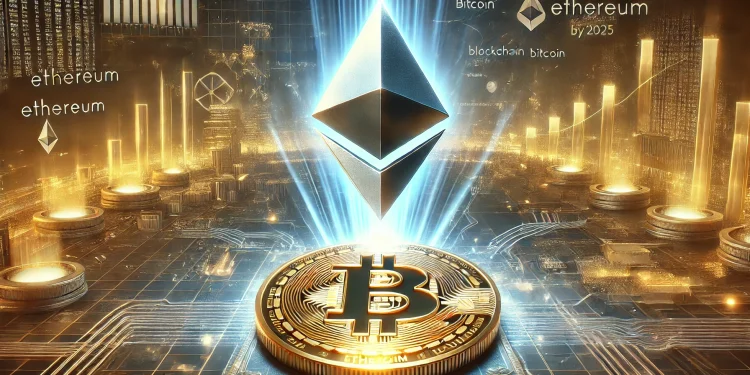Introduction: DeFi in 2024 – A New Era of Financial Innovation
The decentralized finance (DeFi) sector has taken giant strides in 2024, evolving from niche experimentation into a robust financial ecosystem. This year’s developments reflect a transition toward more mature applications, increased security, and integration with traditional finance. Layer-2 scalability solutions, the tokenization of real-world assets (RWAs), and innovative stablecoin models are among the highlights shaping the sector.
Below, we explore the most significant DeFi launches and trends of 2024, providing insights into the protocols, technologies, and innovations transforming the industry.
1. Key DeFi Protocol Launches of 2024
- zkSync and Arbitrum Expansion
Layer-2 solutions are pivotal to DeFi’s growth in 2024, addressing scalability and high gas fees. Protocols like zkSync and Arbitrum have seen rapid adoption, allowing platforms such as Uniswap and Curve to offer faster, cheaper transactions. zkSync leverages zero-knowledge proofs for enhanced scalability, while Arbitrum offers compatibility with Ethereum smart contracts, providing developers with a seamless environment for launching decentralized apps (dApps) (Crypto Innovations, CoinBureau). - Ethena: Yield-Bearing Stablecoins
One of the most disruptive launches in 2024 is Ethena, which introduces yield-bearing stablecoins that combine stable value with passive income opportunities. This model attracts conservative investors, bridging the gap between crypto and traditional finance. These stablecoins are backed by staked Ether and real-world assets, offering both security and consistent yields (Cointelegraph, Bitlocus). - Azura: Institutional DeFi Platform
Azura, a new DeFi interface, made headlines following a $6.9 million funding round led by the Winklevoss twins. Azura aims to provide a seamless experience for institutions entering DeFi, addressing compliance and liquidity challenges while focusing on real-time analytics for risk management (Cointelegraph).
2. Tokenization: Real-World Assets on the Blockchain
Tokenization has been a defining trend in 2024, with platforms integrating real-world assets (RWAs) such as real estate, stocks, and bonds into DeFi protocols. These tokenized assets enhance liquidity and open up new avenues for decentralized finance. For example, Centrifuge enables businesses to access DeFi liquidity by using invoices as collateral, marking a shift toward real-world financial integration (CryptoInnovations, Cointelegraph).
3. Innovations in Cross-Chain Interoperability
As DeFi scales across multiple blockchains, cross-chain interoperability becomes essential. Several protocols have launched solutions enabling the seamless transfer of tokens and data between Ethereum, Solana, and other ecosystems. These bridges are critical to unlocking new liquidity pools and making DeFi more user-friendly. For instance, cBridge by Celer now supports a wider range of blockchain networks, reducing the fragmentation across DeFi ecosystems (Bitlocus, CoinBureau).
4. Layer-2 Rollup Solutions: Reducing Transaction Costs
Layer-2 rollups, particularly Optimistic Rollups and Zero-Knowledge Rollups (zk-Rollups), have become cornerstones of DeFi scalability in 2024. These solutions significantly lower fees and increase transaction throughput, encouraging smaller users to participate in DeFi markets. The adoption of Layer-2 technologies by leading platforms such as Uniswap and Curve demonstrates their importance in addressing Ethereum’s scalability challenges (Crypto Innovations, Bitlocus).
5. Regulatory Developments and Compliance Tools
Regulation is another significant theme in 2024. The European MiCA (Markets in Crypto-Assets) regulations and stricter KYC/AML requirements are pushing DeFi platforms toward greater transparency. Many projects are integrating on-chain compliance tools, such as real-time anti-money laundering (AML) analytics, to align with these evolving frameworks. Platforms like Bitlocus offer compliance-friendly DeFi solutions that allow users to interact with decentralized protocols without bypassing regulatory safeguards (Bitlocus, Cointelegraph).
6. Institutional Adoption of DeFi
In 2024, institutional adoption has accelerated, with many traditional financial players experimenting with DeFi. This shift reflects growing confidence in blockchain technology’s ability to provide higher returns and innovative financial products. Yield-bearing assets and tokenized treasuries are gaining attention as institutions look to diversify their portfolios with blockchain-based investments (Bitlocus).
7. The Rise of Decentralized Physical Infrastructure Networks (DePIN)
A novel concept gaining traction in 2024 is DePIN, where blockchain technology is used to manage and monetize physical infrastructure assets. DePIN represents the intersection of the Internet of Things (IoT) and DeFi, empowering users to own, operate, and profit from infrastructure in a decentralized manner. This trend is seen as the next frontier in both DeFi and IoT (Blockchain Magazine).
8. Security Challenges and Audits in DeFi
With DeFi’s rapid growth, security remains a top priority. Many 2024 launches have placed a renewed emphasis on audits and bug bounty programs to safeguard user funds. Platforms like ImmuneFi are helping protocols minimize risks by offering rewards to ethical hackers who identify vulnerabilities. This proactive approach is essential to maintaining trust in a space vulnerable to hacks and exploits (CoinBureau).
9. Gaming and NFTs in DeFi
Another exciting development in 2024 is the integration of NFTs into DeFi platforms. Gamified DeFi products and NFT-collateralized loans are attracting new users and expanding market participation. These innovations create new avenues for liquidity by allowing users to unlock value from non-fungible assets, contributing to a more diverse DeFi ecosystem (Bitlocus, Cointelegraph).
Conclusion: DeFi’s Trajectory Toward Maturity
The DeFi ecosystem of 2024 is evolving rapidly, marked by innovative launches, enhanced interoperability, and a greater focus on regulatory compliance. Layer-2 solutions, tokenization, and yield-bearing stablecoins are setting the stage for the next wave of growth, bringing DeFi closer to mainstream adoption. With institutions now entering the space and DeFi bridging the gap with traditional finance, the sector is poised to reshape the global financial landscape.
Looking ahead, the success of DeFi will hinge on balancing decentralization with regulatory compliance, maintaining security, and fostering innovation. As these challenges are met, DeFi will continue to attract both retail and institutional participants, driving further growth and financial inclusion.


